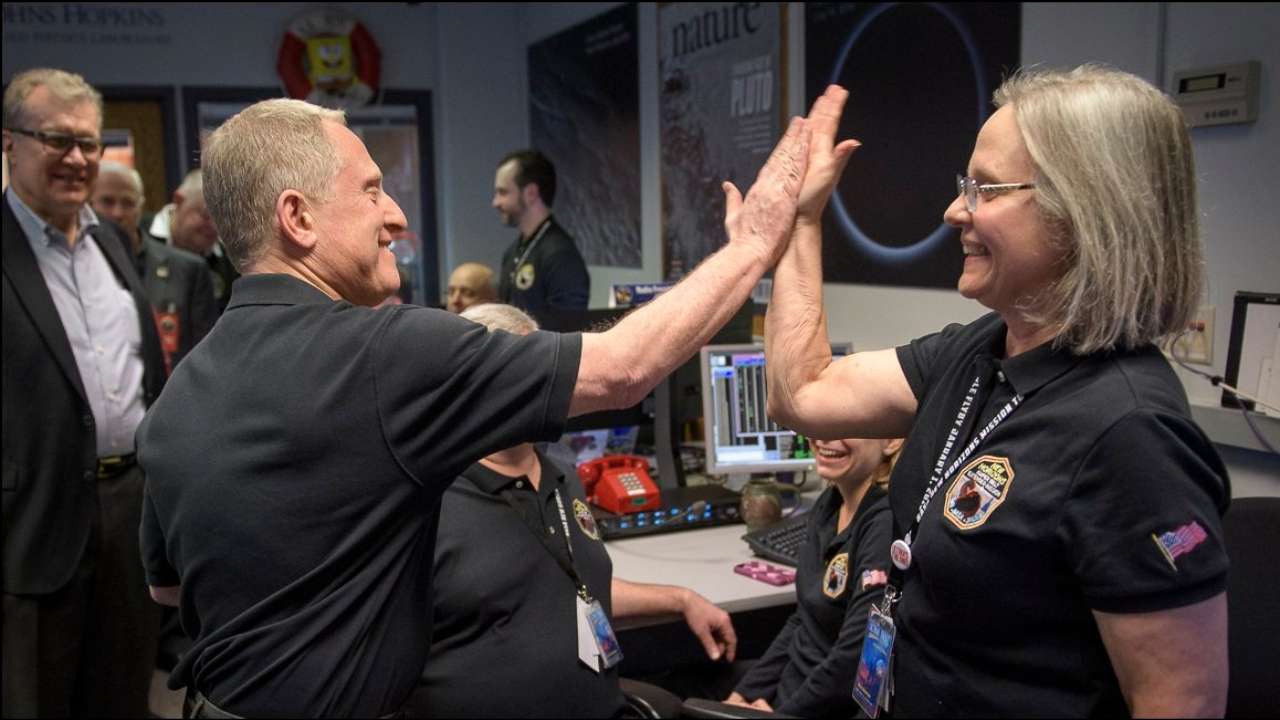NASA’s New Horizon Space craft’s “Ultima Thule” flyby

NASA has achieved something incredible on the New Year’s day. NASA’s New Horizons spacecraft passes by the most distant target which is nicknamed as “Ultima Thule” and is located in the Kuiper belt in the outermost regions of the Solar System, beyond the orbit of Neptune which turns out to be 4 billion miles away from the Sun! Almost 13 years after the launch, the spacecraft will continue its exploration of the Kuiper Belt until at least 2021.

New Horizons Mission Operations Manager Alice Bowman of the Johns Hopkins University Applied Physics Laboratory is seen before a press conference after the team received confirmation from the New Horizons spacecraft that it has completed the flyby of Ultima Thule, Tuesday, Jan. 1, 2019 at Johns Hopkins University Applied Physics Laboratory (APL) in Laurel, Maryland. Photo Credit: (NASA/Joel Kowsky)
The New Horizon spacecraft captured images during its flyby has been released. The new images taken from as close as 17,000 miles on approach revealed Ultima Thule as a “contact binary,” consisting of two connected spheres. End to end, the world measures 19 miles in length. The team has named the larger sphere “Ultima” (12 miles/19 kilometers across) and the smaller sphere “Thule” (9 miles/14 kilometers across).

The first color image of Ultima Thule, taken at a distance of 85,000 miles (137,000 kilometers) at 4:08 Universal Time on January 1, 2019, highlights its reddish surface.
NASA is delighted with the results and says that It is the farthest exploration in the human history. The spacecraft is still alive and producing signals from the destination. Through this mission, NASA is intended to understand the origins of the solar system which will lead to further discoveries about our vast universe in the coming years!!















 Subscribe with Your Email for Exclusive Gosschips Updates!
Subscribe with Your Email for Exclusive Gosschips Updates!